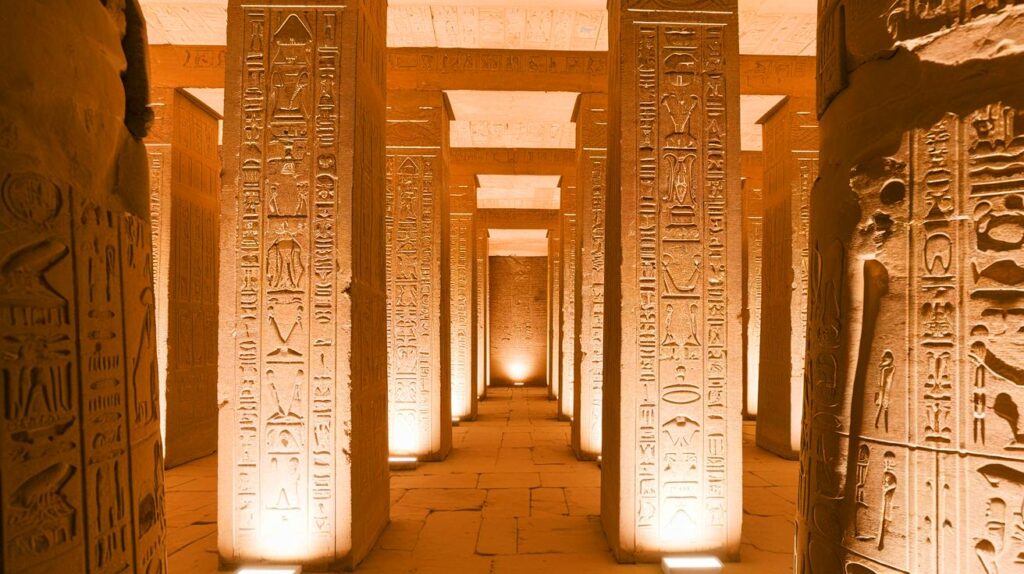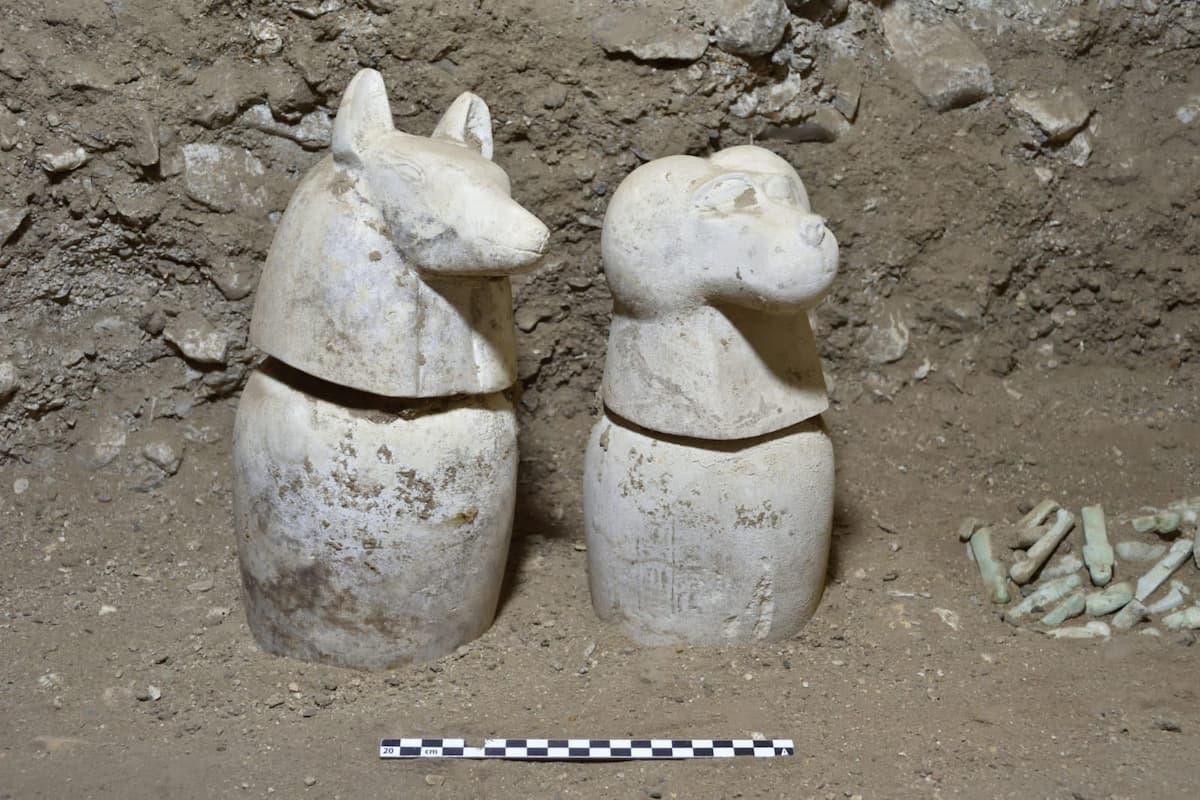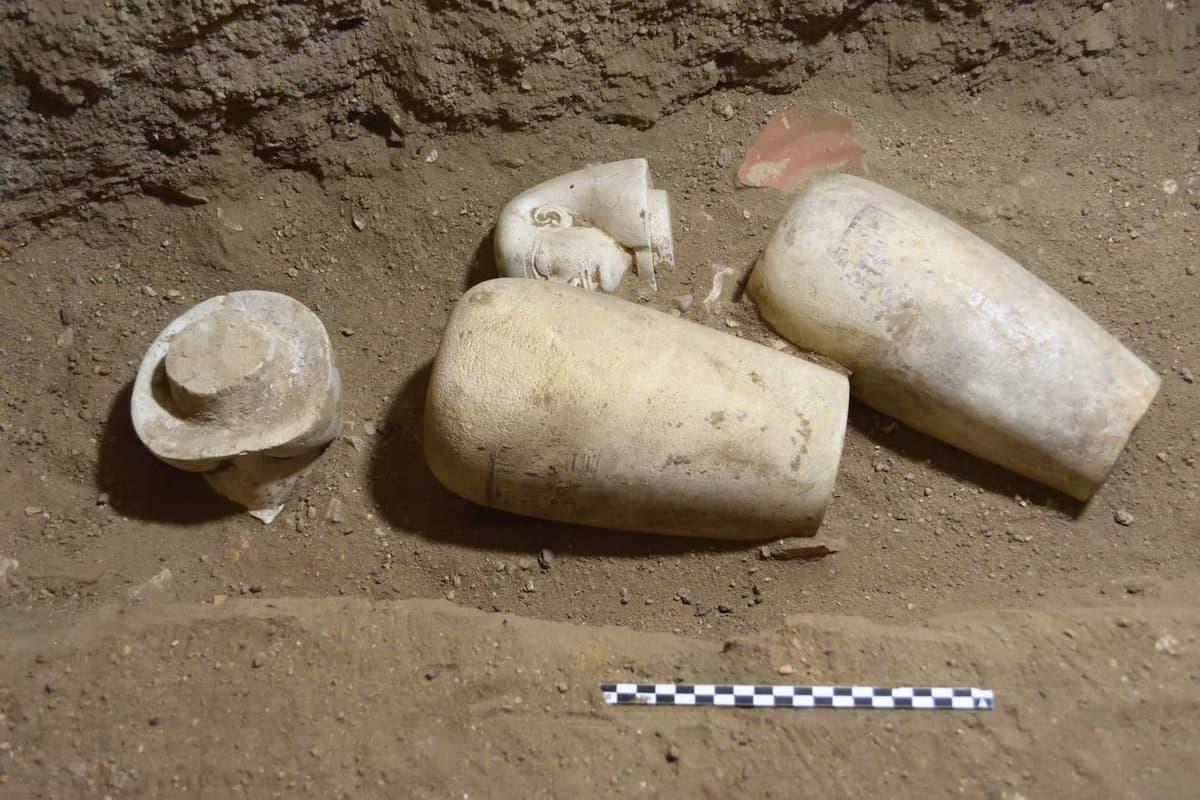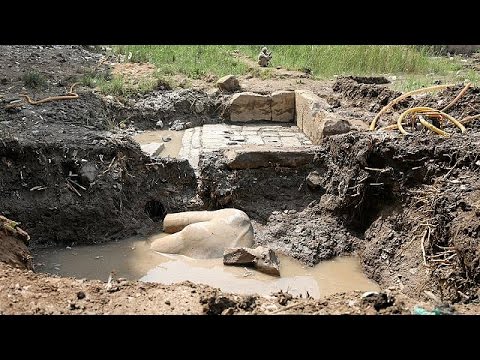| In Brief |
|
The recent discovery of an ancient school within the temple of Ramses II in Luxor opens new perspectives on the multifunctional role of temples in ancient Egypt. More than just a place of worship, the Ramesseum emerges as an educational and administrative center, integrating social, economic, and political functions. This archaeological site, explored by a joint Franco-Egyptian mission, thus unveils a unique dimension of daily life and state organization during the pharaonic era.
An Unprecedented Learning Place within the Ramesseum
The uncovering of the “House of Life” at the heart of the Ramesseum constitutes a significant discovery for Egyptian archaeology. This school, whose existence was previously only suggested by ancient texts, now stands as a tangible reality. The excavations have revealed various educational objects, such as students’ drawings and learning tools, demonstrating a structured education.
Learning in such a prestigious location as the temple of Ramses II involved the transmission of knowledge at the highest level. This discovery underscores the importance of education in shaping the administrative elites of ancient Egypt. Mohamed Ismail from the Supreme Council of Antiquities emphasizes the impact of this school on the training of future scribes and officials. The “House of Life” appears to be a vital pillar of the political and social organization of the time.
An Integrated Economy Around the Temple
The Ramesseum was not just an educational and religious center but also a genuine economic platform. Excavations have highlighted a complex network of warehouses and workshops, attesting to a diverse economic activity. Essential goods such as wine, olive oil, and honey were produced and stored here.
Here is a table illustrating some identified products:
| Product | Quantity |
|---|---|
| Wine | Over 400 jars |
| Olive oil | Significant quantity |
| Honey | Large reserve |
This economic organization allowed for both the self-sufficiency of the temple and the support of an active community of artisans and managers. The discovered structures also demonstrate the temple’s central role in the regional logistical network, linked to the artisans of Deir el-Medina.
An Administrative and Political Complex
Beyond its cult and educational functions, the Ramesseum was also a major administrative center. The buildings discovered in the eastern part of the complex were dedicated to bureaucratic activities. Scribes and administrators managed resource flows and artisanal productions here.
Christian Leblanc from the University of Paris-Sorbonne emphasizes the political dimension of the Ramesseum. The adjacent royal palace, with its throne and audience hall, highlights the temple’s role as an effective seat of power. This configuration illustrates how the Ramesseum integrated education, worship, administration, and royal authority within a single space.
The temple thus functioned as a nerve center, articulating the multiple levers of pharaonic power, and forming an elite capable of managing state affairs.
A Site in Constant Reinvention
The Ramesseum, far from being a static monument, has undergone numerous reinterpretations over the centuries. Used as a necropolis during the Third Intermediate Period, it housed complex burials and remarkable funerary artifacts. The rediscovery of the tomb of Sehetep-ib-Re illustrates the continuous occupation of the site well before Ramses II.
Recent restoration efforts have allowed for the reconstruction of several major elements of the temple, enhancing our historical understanding. Archaeologists have notably restored the colossi of Tuya and Ramses II, returning the site to its original grandeur. This restoration contributes to revitalizing the temple and preserving its pharaonic memory.
The rediscovery of the ancient school within the Ramesseum offers new insights into the social and political organization of ancient Egypt. How did this integration of educational, economic, and political functions influence pharaonic society and its longevity?










